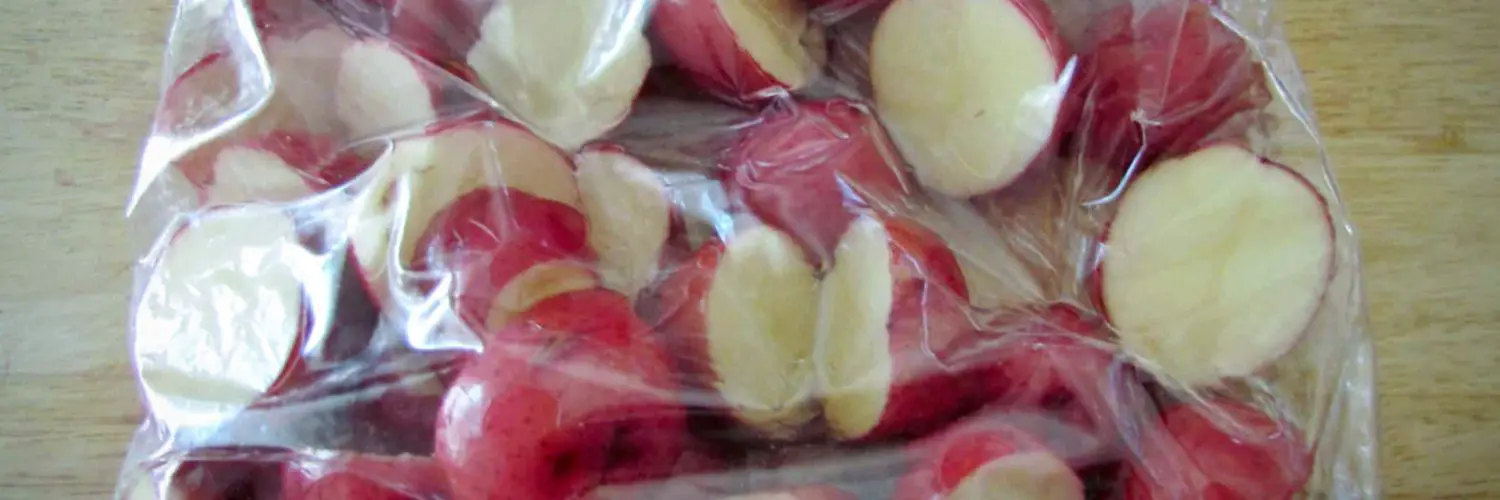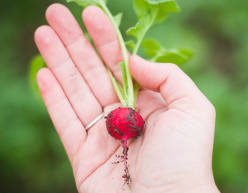Table of Contents
While many might not be aware, radishes actually contain an impressive amount of water (up to 95% of their weight) – which begs the question: can these vibrant veggies handle a trip to the freezer?
 Yes, it is possible to freeze radishes, although they may not be as crisp when thawed as they were when fresh. If time is of the essence, you may be tempted to skip blanching vegetables – but it’s strongly recommended! Read on for an explanation of why. To freeze radishes, first wash and slice them thin. Spread the slices out on a baking sheet lined with parchment paper and place the baking sheet in the freezer. Once the slices are frozen, transfer them to an airtight container or zip-top bag and return them to the freezer. When you’re ready to use them, let the radishes thaw at room temperature or in the refrigerator. They can then be used in cooked dishes, such as stir-fries or soups, or added to salads or sandwiches.
Yes, it is possible to freeze radishes, although they may not be as crisp when thawed as they were when fresh. If time is of the essence, you may be tempted to skip blanching vegetables – but it’s strongly recommended! Read on for an explanation of why. To freeze radishes, first wash and slice them thin. Spread the slices out on a baking sheet lined with parchment paper and place the baking sheet in the freezer. Once the slices are frozen, transfer them to an airtight container or zip-top bag and return them to the freezer. When you’re ready to use them, let the radishes thaw at room temperature or in the refrigerator. They can then be used in cooked dishes, such as stir-fries or soups, or added to salads or sandwiches.
Alternatively, you can also freeze radishes by blanching them first. To do this, bring a pot of water to a boil and add the radishes for 1-2 minutes. Remove the radishes from the water and immediately plunge them into an ice bath to stop the cooking process. Once they are cool, drain the radishes and pat them dry with a paper towel. Then proceed with the freezing process as described above.
Previously frozen radishes may not be as crisp as fresh radishes when used in a salad. However, they can still be used in salads and may still add flavor and texture to the dish. If you are using previously frozen radishes in a salad, you may want to slice them thin to help them blend in with the other ingredients. You can also try grating the radishes or shredding them with a food processor or mandoline to create a finer texture that may be more suitable for salads. Keep in mind that radishes can have a pungent flavor, so you may want to use them in moderation in your salads to avoid overpowering the other ingredients.
It is generally not recommended to freeze whole vegetables, including radishes, as the texture may be compromised once they are thawed. When vegetables are frozen, the water inside them expands and can cause the cell walls to rupture. When the cells are damaged, the texture of the vegetable may become soft or mushy once it is thawed. This is especially true for vegetables with a high water content, such as radishes.
Can You Freeze Radishes Whole
Of course we’re talking here about round red or french radishes, I’d reckon that you wouldn’t even consider freezing whole Daikon or Korean radish, would you?
 Instead of freezing whole radishes, it is better to slice or chop them before freezing. This allows the radishes to freeze more quickly and helps to prevent the formation of large ice crystals, which can also damage the cell structure and affect the texture of the radishes once they are thawed. If you do decide to freeze whole radishes, it is important to blanch them first to help preserve their texture and flavor. Start with a pot of boiling water, then add your radishes for a quick one to two minute dip. Remove from the heat and shock in an ice bath – this stops any further cooking but preserves that deliciousness. Dry ’em off with paper towel before freezing away for later enjoyment!
Instead of freezing whole radishes, it is better to slice or chop them before freezing. This allows the radishes to freeze more quickly and helps to prevent the formation of large ice crystals, which can also damage the cell structure and affect the texture of the radishes once they are thawed. If you do decide to freeze whole radishes, it is important to blanch them first to help preserve their texture and flavor. Start with a pot of boiling water, then add your radishes for a quick one to two minute dip. Remove from the heat and shock in an ice bath – this stops any further cooking but preserves that deliciousness. Dry ’em off with paper towel before freezing away for later enjoyment!
Do You Have to Blanch Radishes Before Freezing
I did mentioned blanching in this article at least several times, because it’s really important. Blanching helps to inactivate the enzymes that can cause the vegetables to lose their quality during freezing and storage.
Blanching is a process that involves briefly boiling vegetables in water or steam and then immersing them in ice water to stop the cooking process. Blanching helps to preserve the color, flavor, and texture of vegetables when they are frozen.
Blanching also helps to kill any bacteria or microorganisms on the surface of the vegetables, which can help to extend their shelf life in the freezer. Additionally, blanching can help to remove dirt, debris, and any pesticides or chemicals that may be present on the vegetables.
Overall, blanching is a useful step in the process of freezing vegetables as it helps to preserve the quality of the vegetables and extend their shelf life in the freezer.
How Long Can You Freeze Radishes
Radishes can be frozen for up to 8-12 months if they are properly stored. It is important to label the container or bag with the date of freezing so you can keep track of how long the radishes have been stored. Radishes should be used within 8-12 months for the best quality. To thaw the radishes, let them thaw in the refrigerator or at room temperature. They can then be used in cooked dishes, such as stir-fries or soups, or added to salads or sandwiches.
Also, you probably want to consume frozen radishes earlier if you notice changes in appearance like freeze burn.
Freezer burn is a condition that occurs when the surface of frozen food becomes dehydrated and develops a leathery or crystallized texture. It is caused by the circulation of dry, cold air within the freezer, which can remove moisture from the surface of the food. Freezer burn does not make the food unsafe to eat, but it can affect the quality and flavor of the food.
If your frozen vegetables are covered with freezer burn, you can still use them, but you may want to cut away any heavily dehydrated or crystallized areas before using them. Freezer burn can affect the texture and flavor of the vegetables, so they may not be as good as fresh vegetables. However, they can still be used in cooked dishes, such as stir-fries or soups, where the texture may not be as important.
To prevent freezer burn, it is important to store frozen foods in airtight containers or zip-top bags to minimize the circulation of dry, cold air. It is also a good idea to label the containers or bags with the date of freezing so you can keep track of how long the food has been stored. Properly stored frozen vegetables can generally be stored for 8-12 months in the freezer.























Add comment